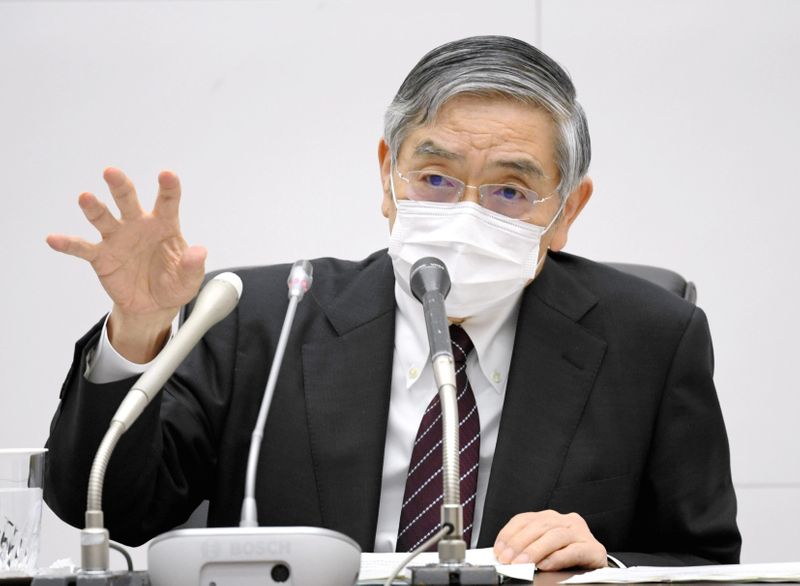TOKYO (Reuters) – As central banks dive into the uncharted waters of yield curve control, Japan, the pioneer of the unorthodox policy, is struggling to stay focused on its own yield targets as it looks instead to money printing to help firms hit by the coronavirus.
The Bank of Japan is expected to hold off expanding stimulus at its policy meeting next week and make no major changes to a set of tools rolled out in recent months to cushion the economic blow from the health crisis.
But BOJ Governor Haruhiko Kuroda is likely to stress the bank’s resolve to keep flooding markets with cash to help companies stay afloat and forgo job cuts.
“The BOJ’s near-term focus will remain on keeping markets stable and easing corporate funding strains,” said a source familiar with its thinking, a view echoed by two more sources.
“Interest rate cuts remain in the BOJ’s tool-kit. But it’s probably not the most likely option now,” the source said.
While warning of risks over the outlook, the BOJ is likely to maintain its view the economy will gradually recover from the damage wrought by the pandemic.
The BOJ became the first central bank to introduce yield curve control (YCC) in 2016, pledging to guide short-term rates at -0.1% and long-term borrowing costs around zero.
Back then, the policy was seen by other central banks as a sign of Japan’s desperation to revive growth through extreme measures.
Now, yield targeting has adopted broader appeal as the pandemic forced many central banks globally to cut rates to near zero.
Australia now sets a target for three-yield bond yields and some Federal Reserve officials have cited YCC as a potential tool including Chairman Jerome Powell.
In Japan, YCC helps keep borrowing costs low for the government as it lays out two stimulus packages worth a combined $2.2 trillion to battle the crisis.
And yet, the BOJ’s near-term focus is shifting towards the amount of money it pumps out via several crisis-response tools, including a 75-trillion-yen ($701 billion) lending facility aimed at channeling funds to companies hit by the virus fallout.
That stimulus mix creates challenges for the BOJ in the way it communicates and guides market expectations.
Putting a new emphasis on the amount of money the BOJ prints makes it difficult to later scale back the programme, with markets potentially interpreting such a move as a policy tightening.
It also makes it harder to convince markets that the BOJ still considers interest rates its main policy lever.
Due to the way it is designed, the size of Japan’s lending scheme could exceed 100 trillion yen if more loans are taken out via government programmes, the sources say.
“When there’s so much uncertainty on when the pandemic could be contained, policymakers must prevent companies from running out of cash. The BOJ is doing exactly that,” said Yasuhide Yajima, chief economist at NLI Research Institute.
“The next task is to restore confidence among firms and households, so they start spending and stimulate growth. I’m not sure whether the BOJ has any tools left to do this.”
(Reporting by Leika Kihara; Editing by Sam Holmes)
















